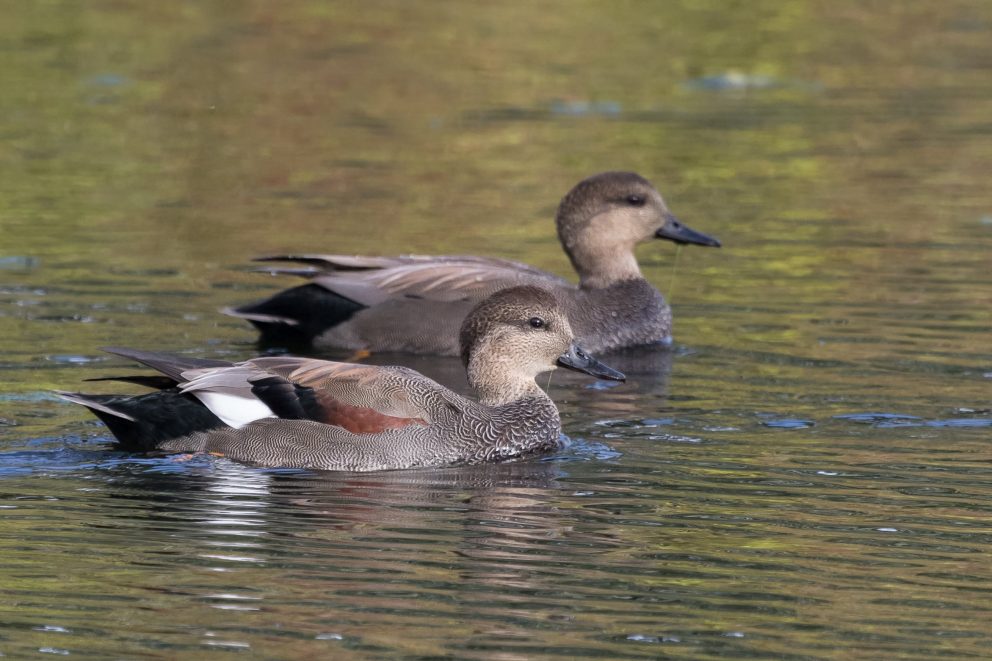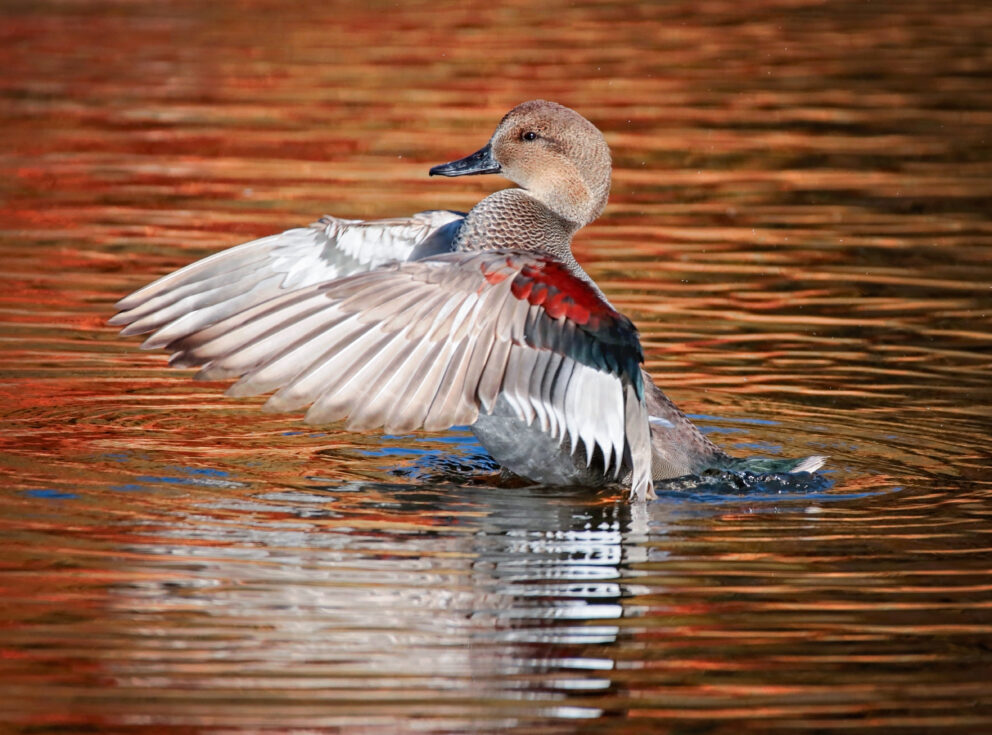- SCIENTIFIC NAME
- Marcea strepera
- CLASSIFICATION
- Bird
- LIFE SPAN
- 5-10 Years
- SIZE
- 18-22.5” | 1-2.75lbs
- STATE CONSERVATION STATUS
-
- State Protected
- FEDERAL CONSERVATION STATUS
- Least Concern
- GAME STATUS
- Game
- GAME TYPE
- Waterfowl
- Washoe
- Humboldt
- Pershing
- Churchill
- Mineral
- Lyon
- Douglas
- Carson City
- Storey
- Elko
- Lander
- Eureka
- White Pine
- Esmeralda
- Nye
- Lincoln
- Clark
Habitat & Range
Gadwall will use marshes, small ponds and lakes for breeding habitats. They like water in more open areas that are not bordered by dense forests or other vegetation other than grasses and shrubs. In Nevada, Gadwall are found throughout the state during the breeding season, non-breeding season, and in the Northwest part of the state, they can be found year-round.
- Agricultural Lands
- Lakes and reservoirs
- Marsh
Threats
- Drought
- Habitat Loss
- Water Diversion
Natural History
Gadwall form bonded pairs and the female chooses the nest site and builds the nest while the male stands guard. Females lay between seven and thirteen eggs in their nest and do the majority of incubation as well. The ducklings will hatch with downy feathers and will be mobile within several hours of hatching.
These ducks are diurnal for most of the year but chose to migrate at night to avoid predation and conserve energy by flying when it’s cooler. They primarily eat plants and aquatic invertebrates including seeds, leaves and stems, aquatic insects, crustaceans, fish, and sometimes amphibians. Gadwall are dabbling ducks so they stay above water when feeding.
Fun Facts














